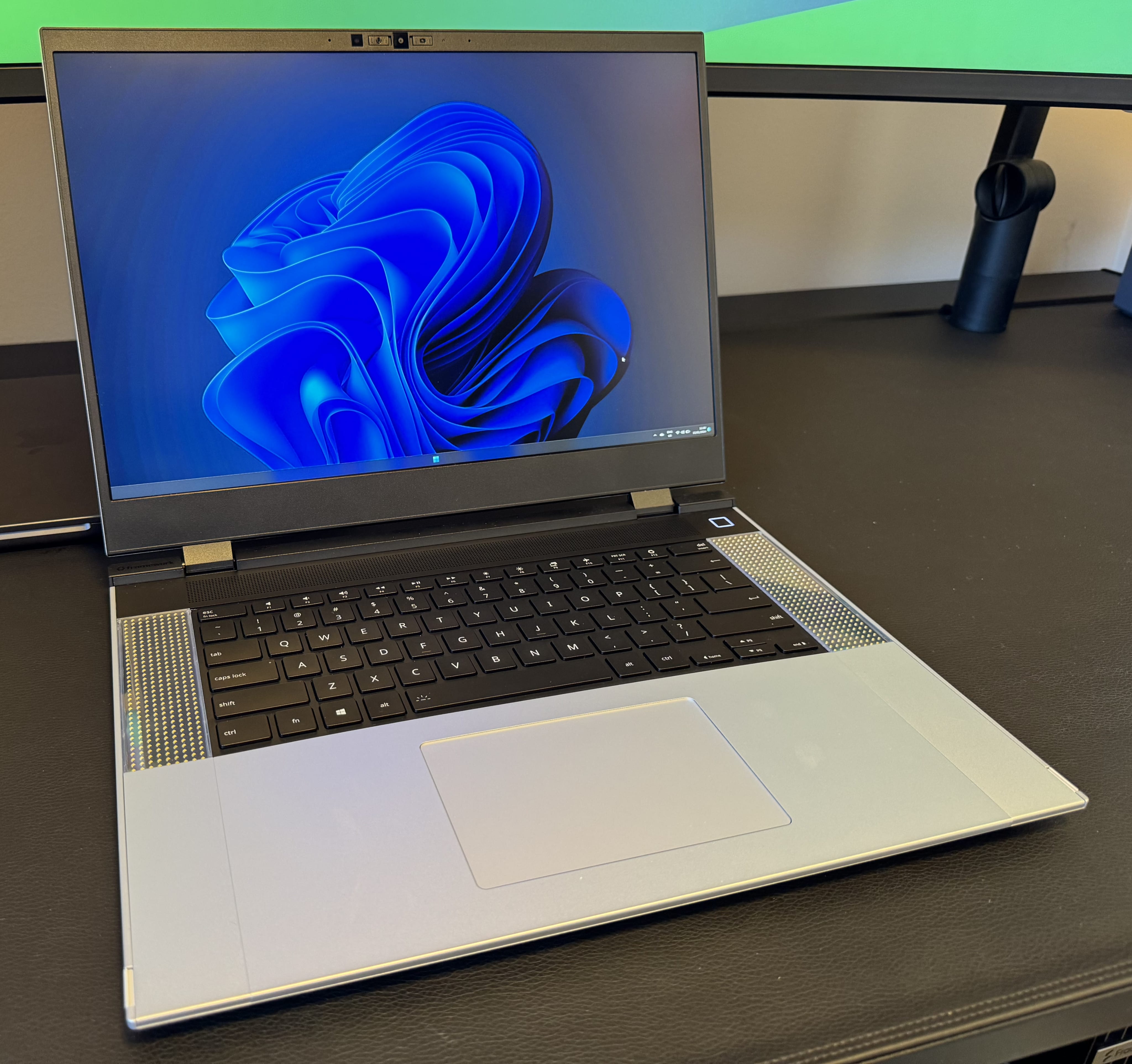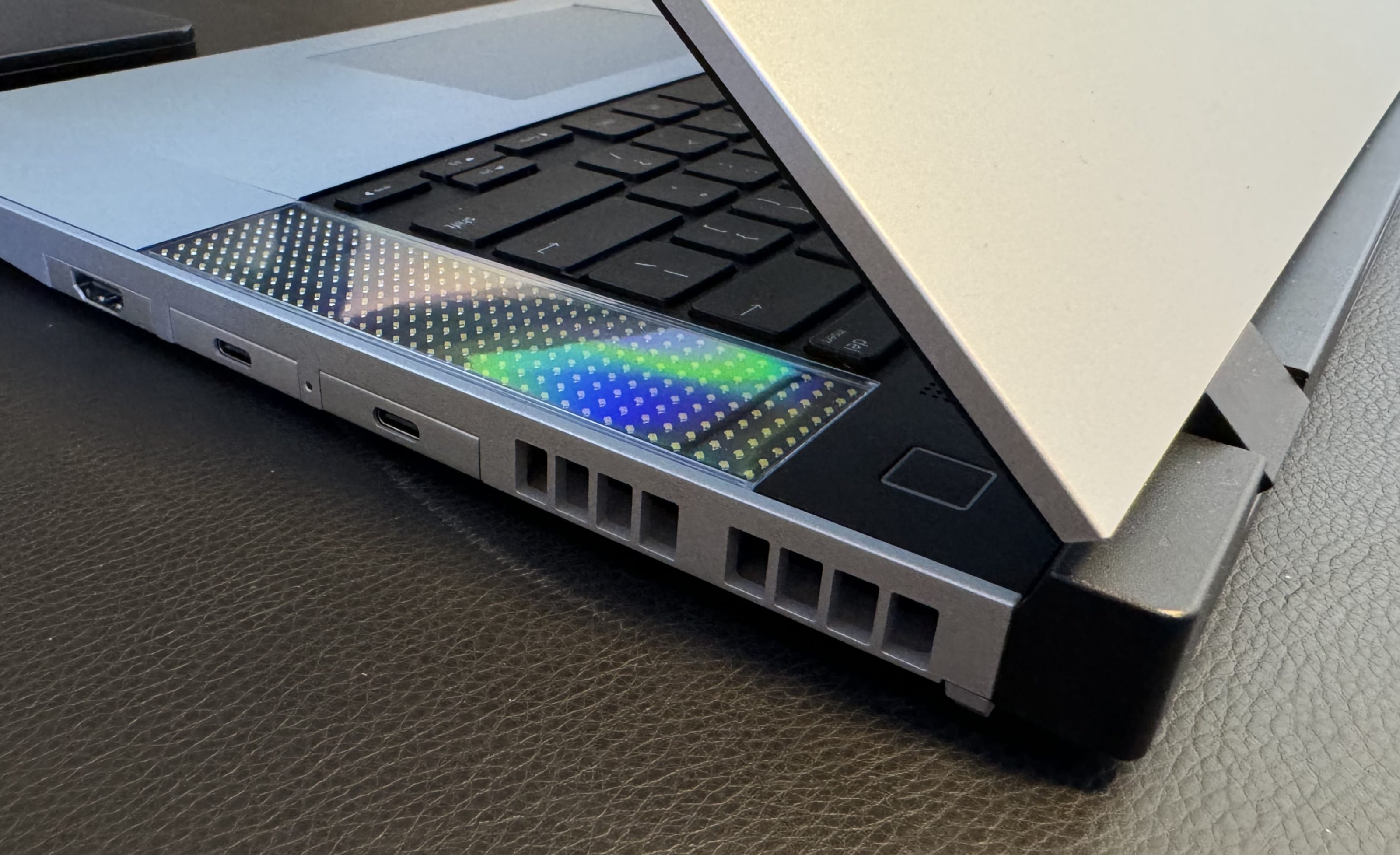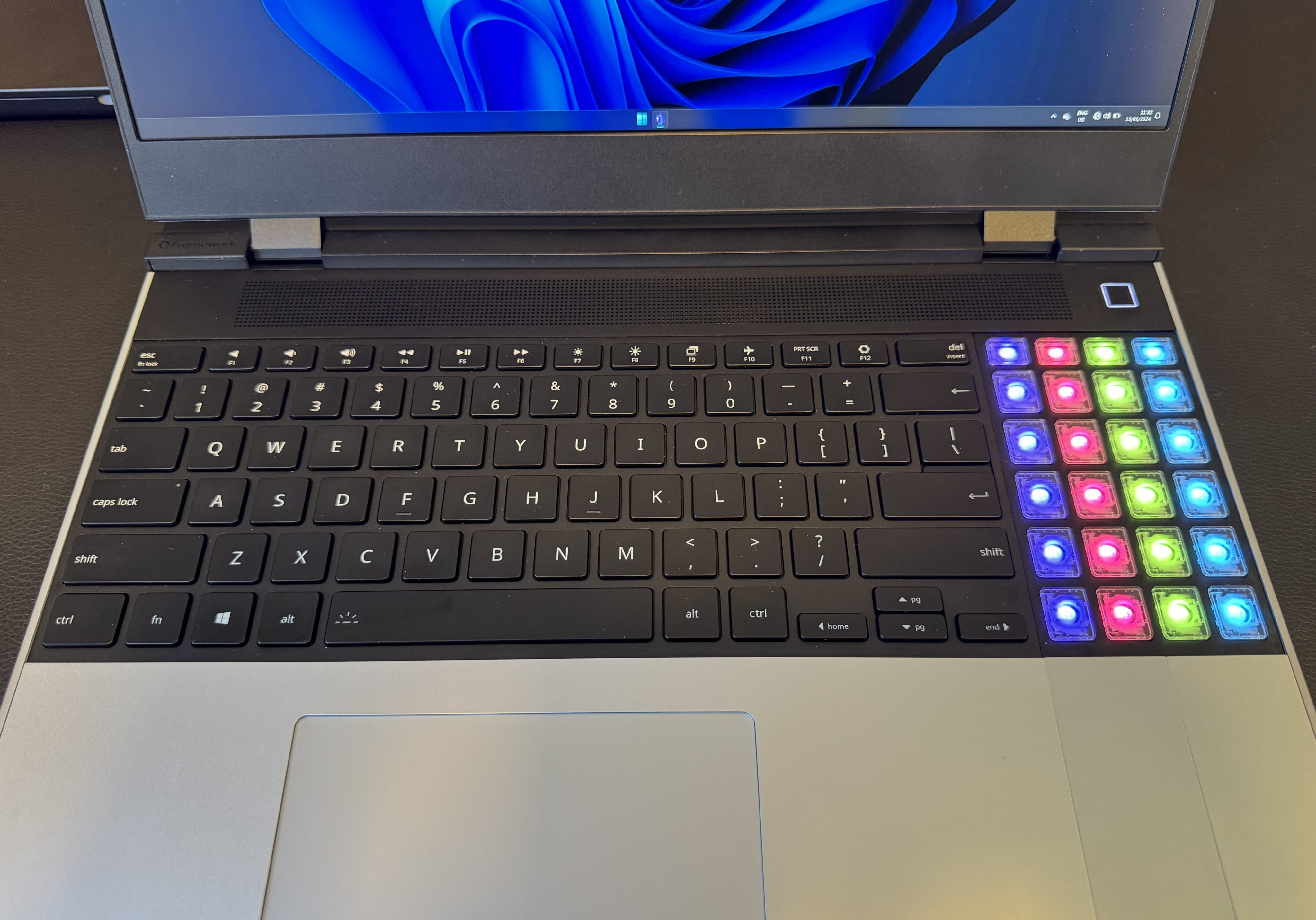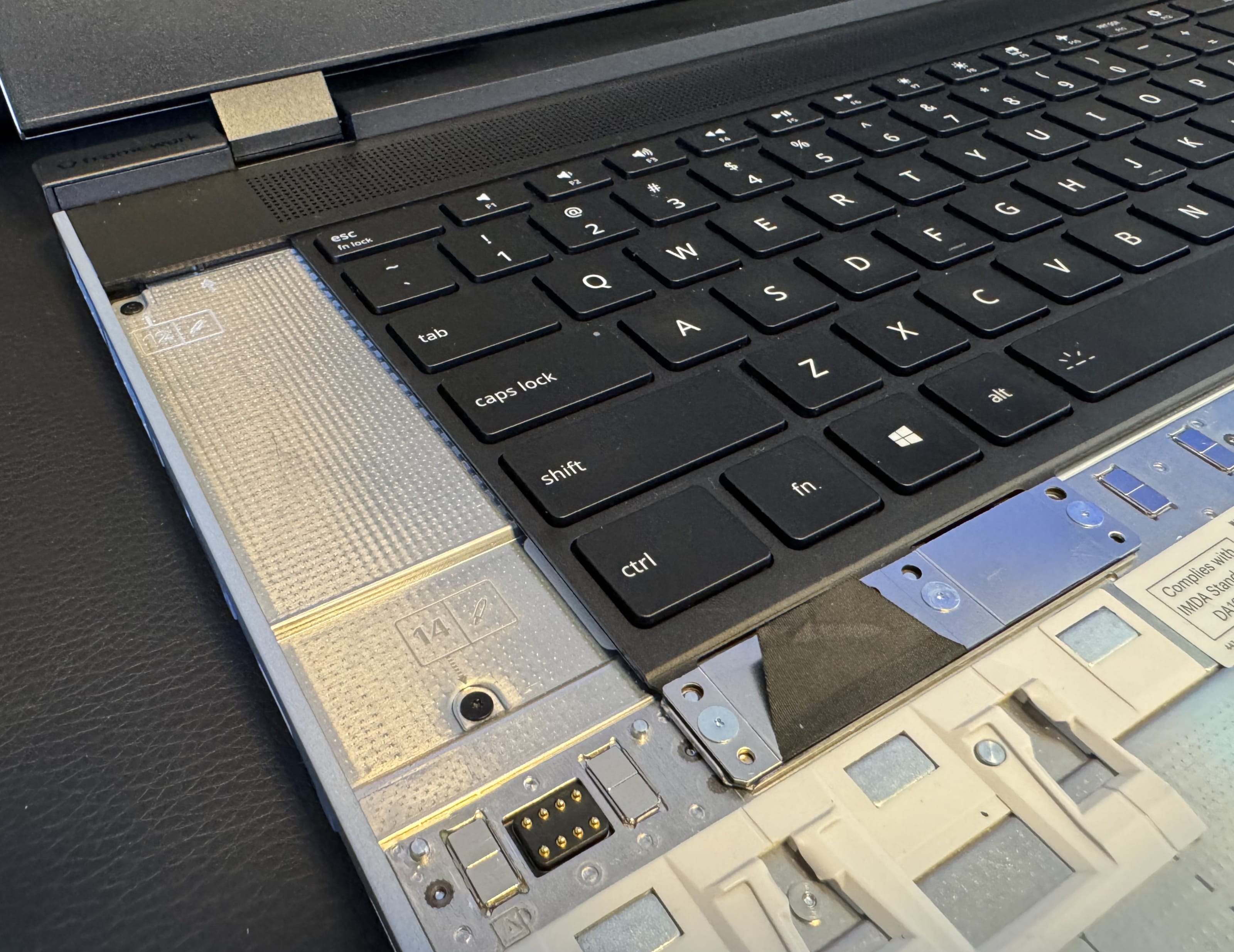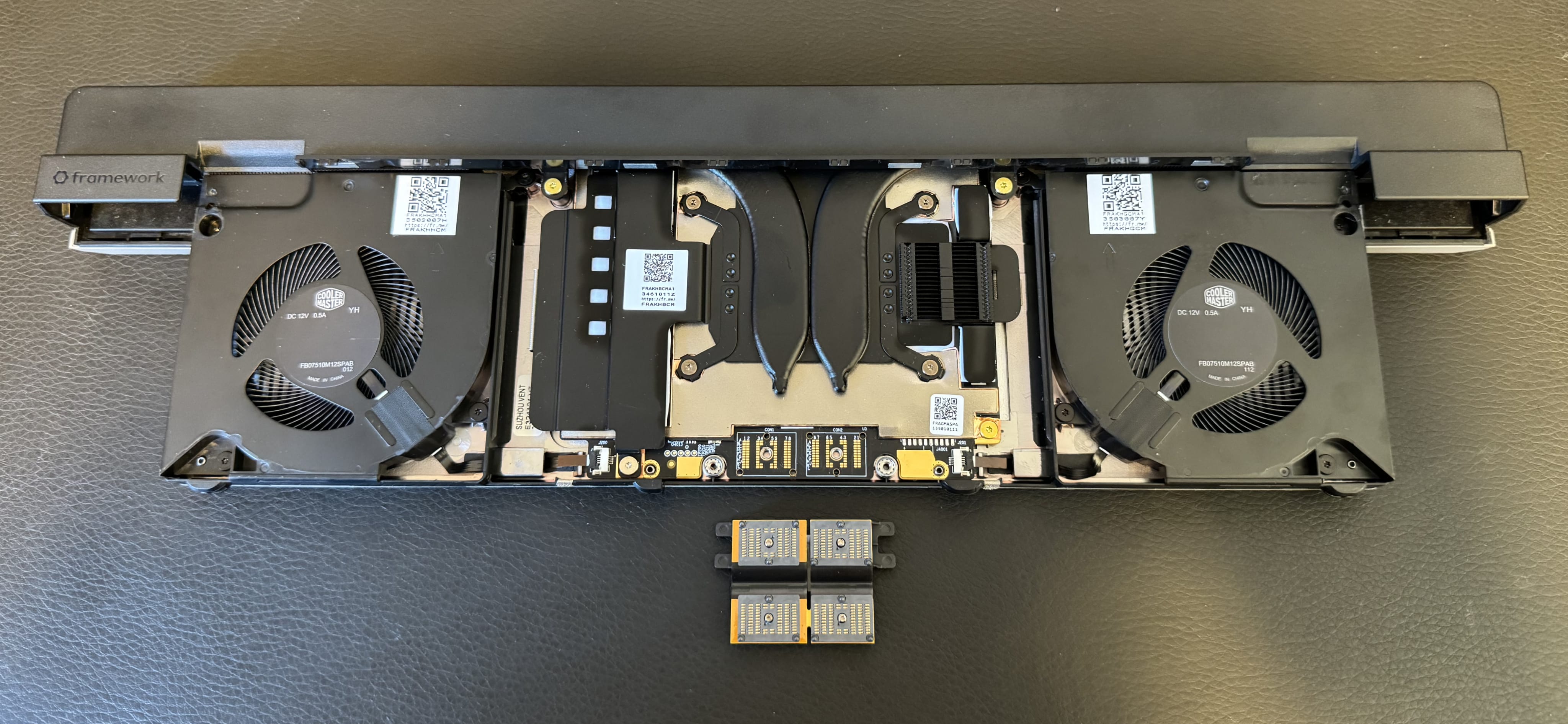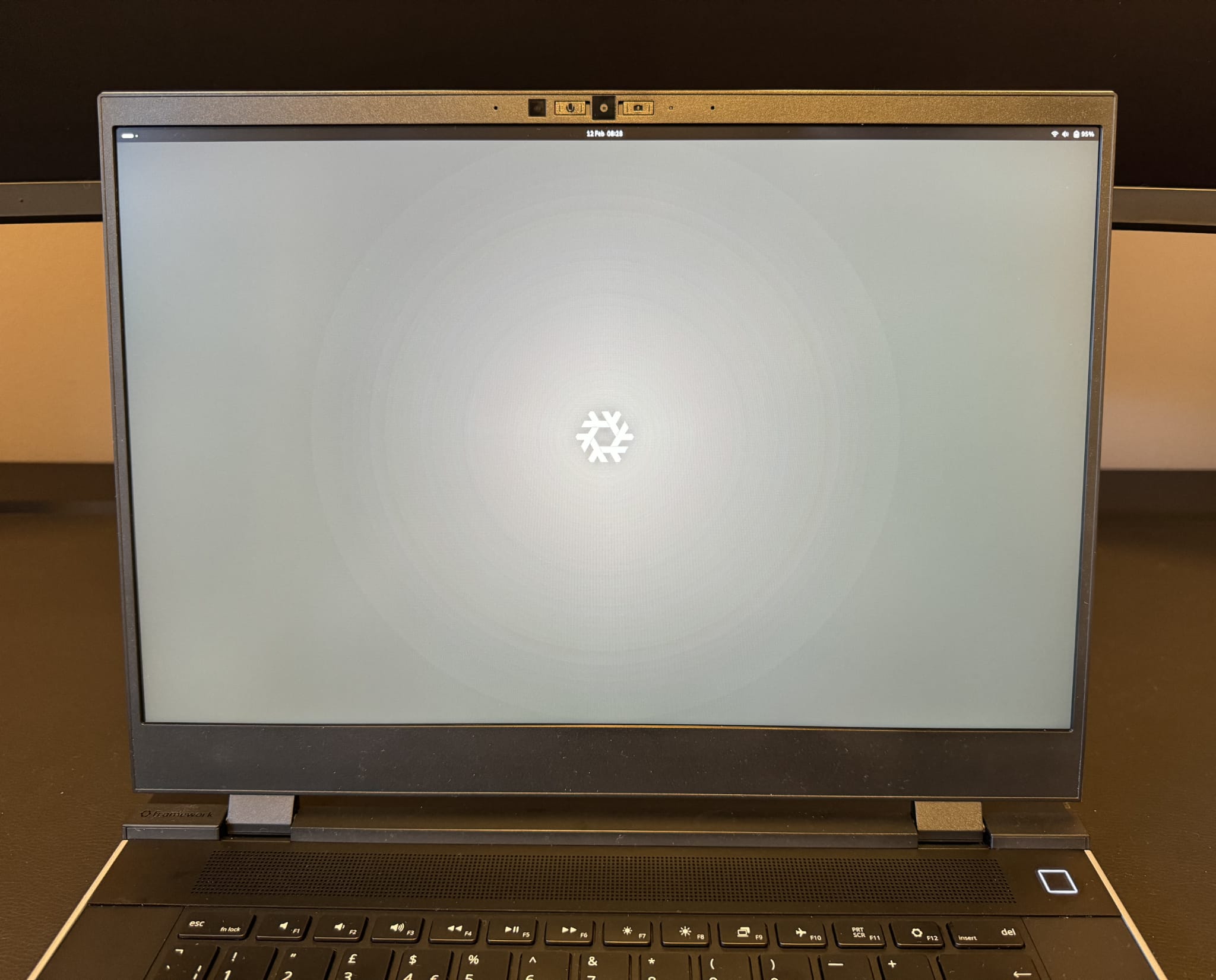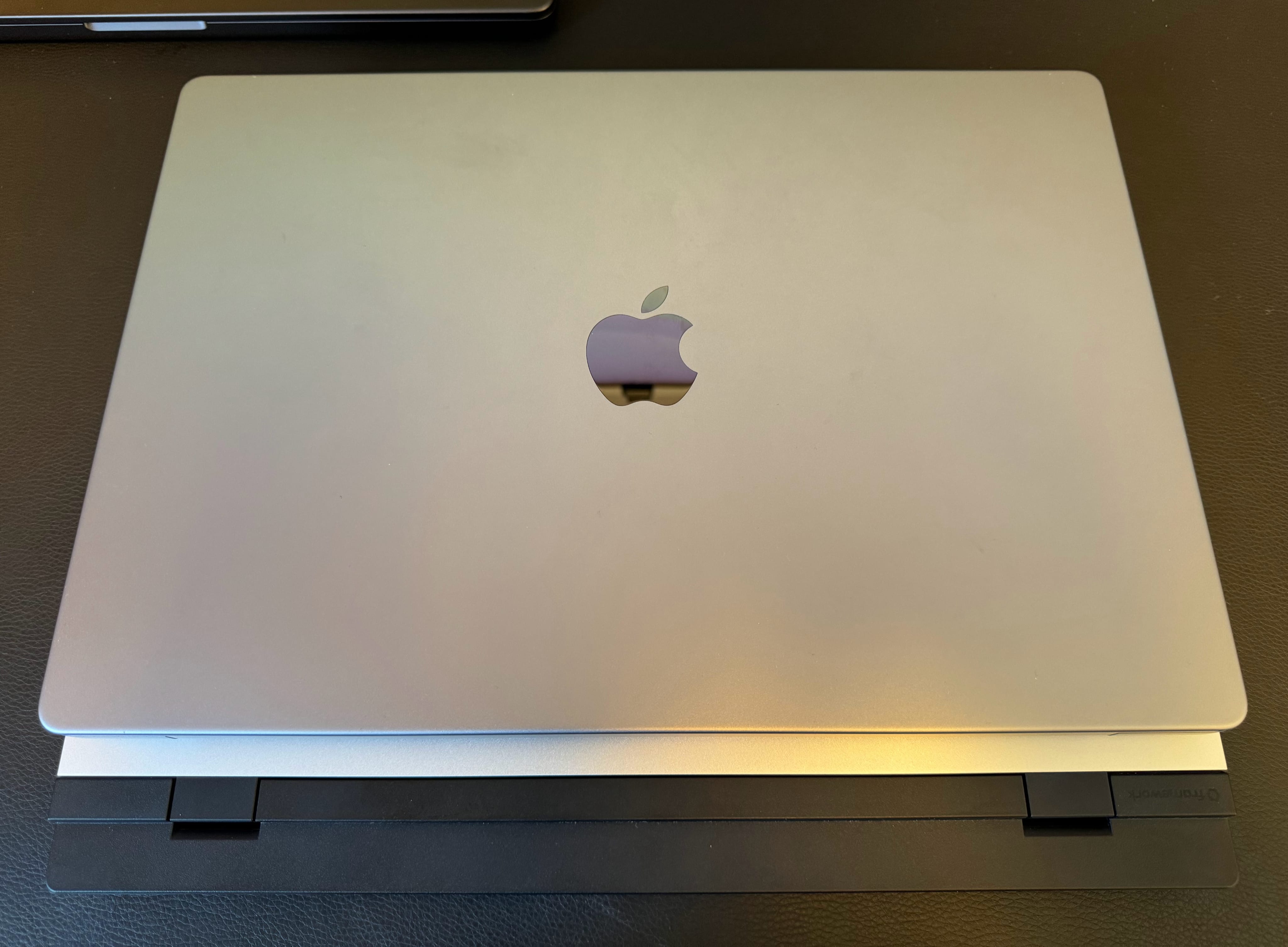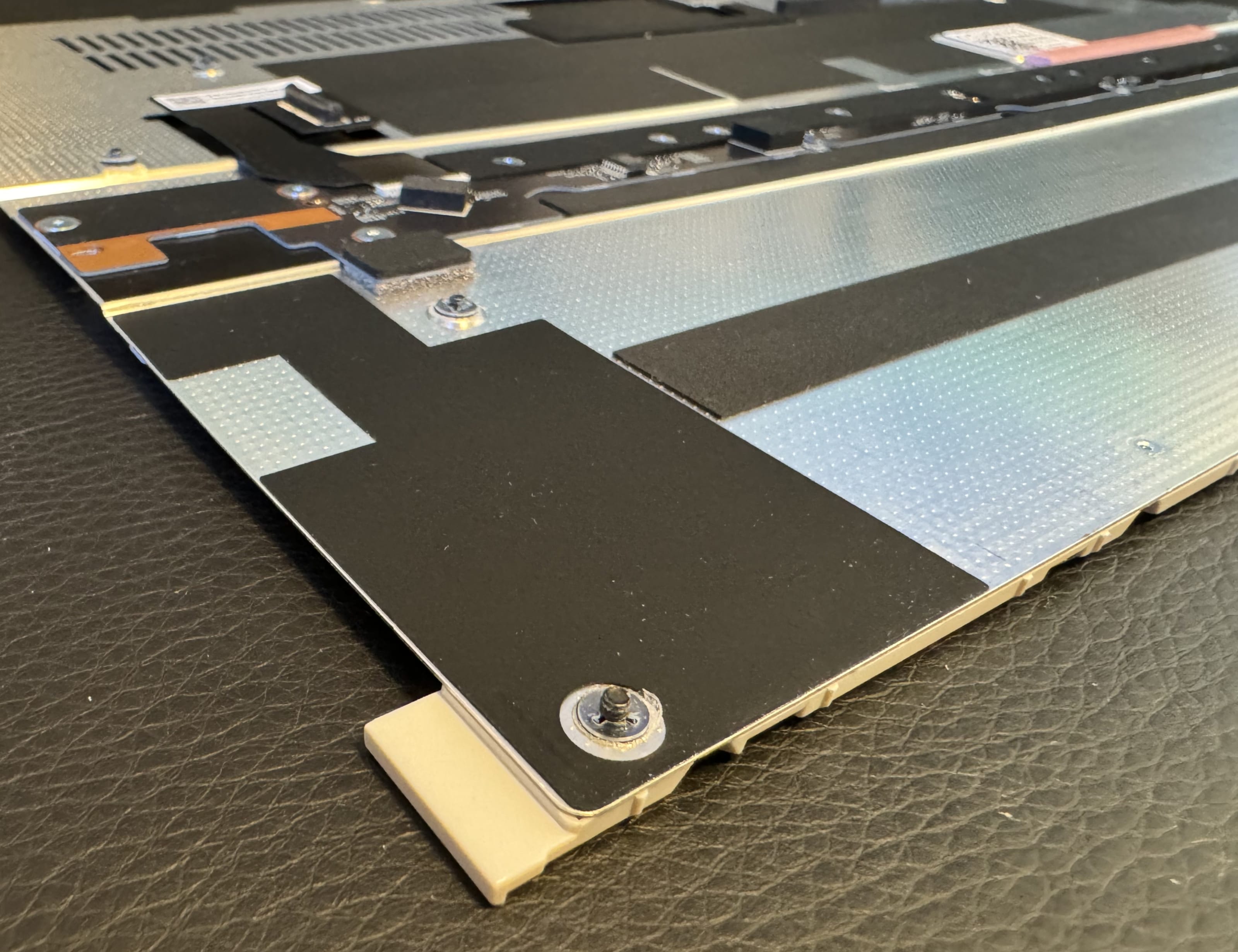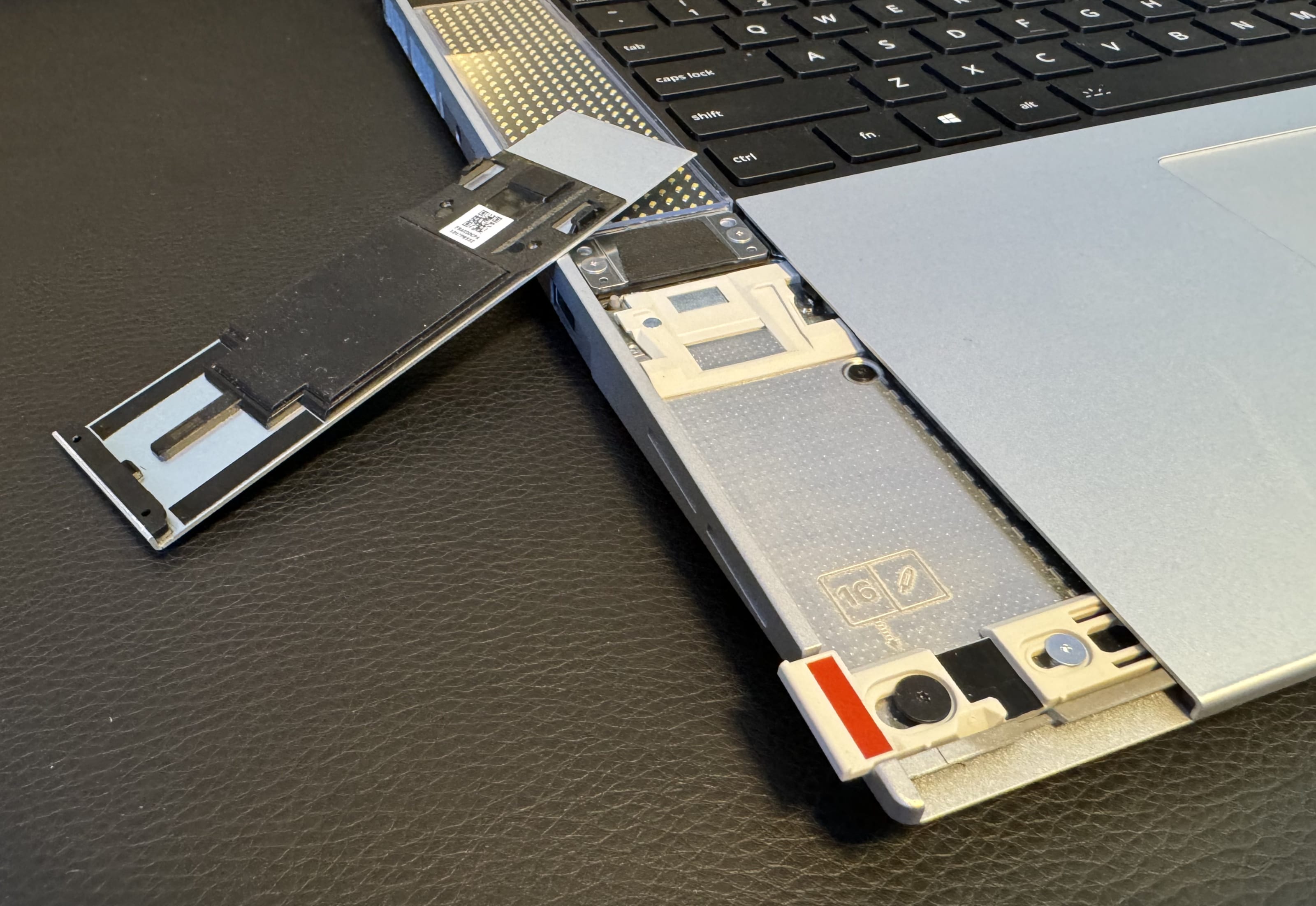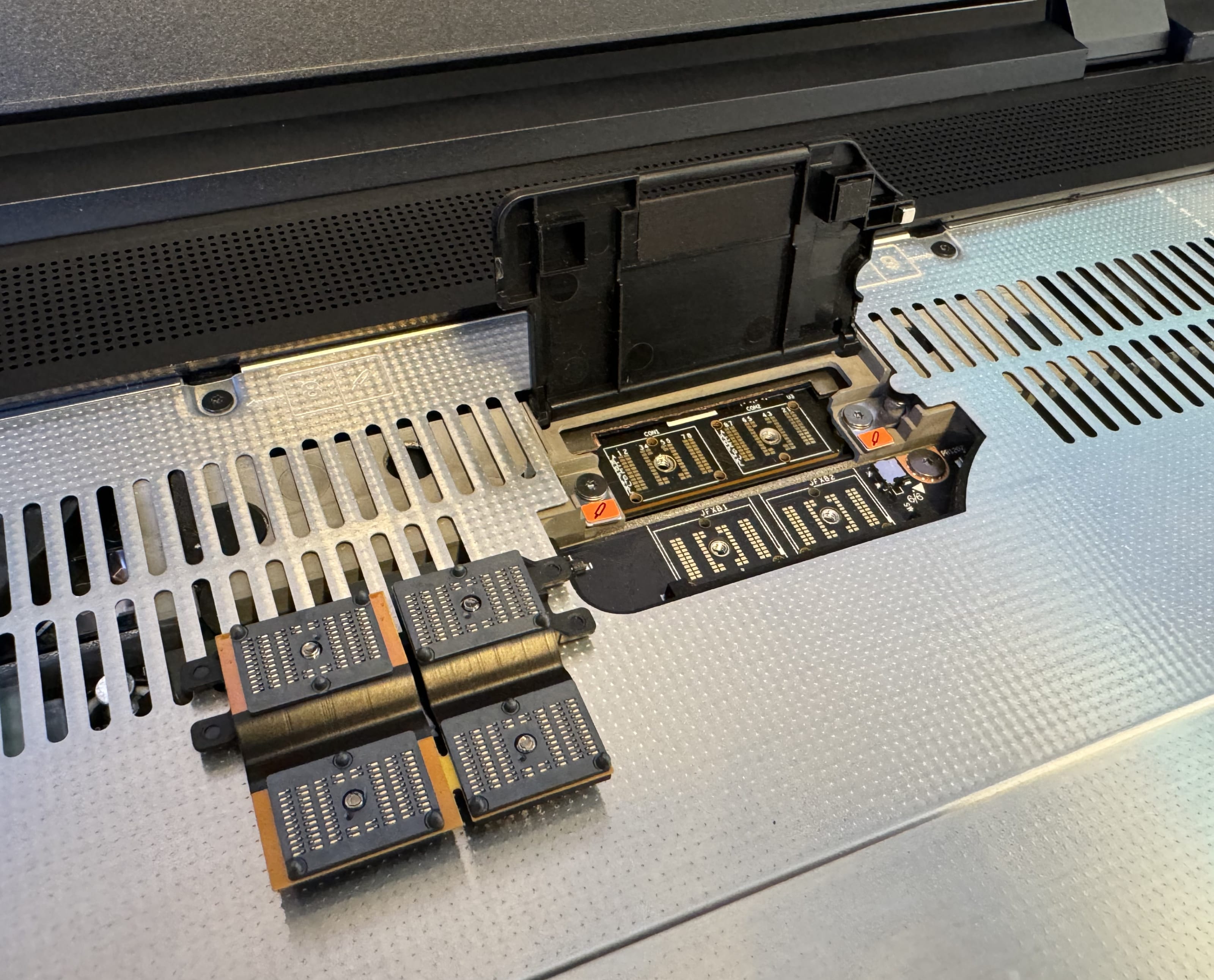Framework Laptop 16
This week, the highly anticipated Framework Laptop 16 started shipping to “batch one” customers.
Thanks to our unique enterprise business partnership with Framework, Nirav and the team were kind enough to offer me early access. Therefore, over the past couple of weeks, I have been secretly testing a pre-release (near-final engineering sample) of the Framework Laptop 16.
I am not a reviewer, therefore if you are interested in a deep dive regarding the Framework Laptop 16, I recommend you watch the “Adam Savage’s Tested” overview video.
With that said, knowing the limited availability of the product, I thought I would share my initial thoughts, hopefully helping others considering a purchase.
I have split my thoughts under the headings “Positives” and “Constructive”. These thoughts have also been shared with Nirav directly.
Positives
Environmental Impact: Promoting the mission of the company, the Framework Laptop 16 proudly prioritises sustainability and the right to repair. Similar to the Framework Laptop 13, the care and attention demonstrated in the product design and manufacturing continue to impress, with thoughtful features that promote longevity through incremental upgrades and servicing. This is all achieved with minimal compromise regarding the performance, aesthetics and cost.
Expansion Cards: The increase from four expansion card slots on the Framework Laptop 13 to six on the Framework Laptop 16, offers unparalleled flexibility. With enterprise business usage in mind, it is common for I/O ports to suffer from “wear and tear”. Therefore, the option to easily replace them at a low cost is an added benefit. In addition, the new expansion card locking mechanism on the Framework Laptop 16 is more robust and user-friendly than the Framework Laptop 13.
Programmable Input Modules: The new programmable input module architecture has a lot of potential, building upon the established QMK firmware. Due to the pre-release nature of the product, the current real-world value is limited but could become an interesting differentiator for the Framework Laptop 16, assuming it is embraced by the community.
Input Module Connections: The input cover modularity is incredible, specifically the intuitive use of magnets and pogo pins. As a result, anyone can quickly and easily swap an input module or reconfigure the input layout with minimal effort, even while the laptop is in use.
Expansion Bay: The expansion bay is both brilliant and a little frustrating. Previous modular graphics solutions (used by Dell/Alienware) were always limited by the fact that the cooling solution was not part of the module itself, significantly limiting future upgrade options. Framework has designed a system that incorporates the graphics hardware (e.g., GPU/Memory) and the required active cooling system. This is brilliant, as it allows future graphics modules to “right-size” their cooling solution. As a negative, it means that the Framework Laptop 16 is not usable without a module installed. Therefore, if you plan/hope to “hot-swap” graphics whilst travelling, you will need purchase/carry an Expansion Bay Shell, making the total package a little cumbersome.
Native Linux Support: Framework continues to offer excellent support across Windows and Linux. Native Linux support is not always guaranteed by hardware manufacturers, resulting in conflicts and/or complex workarounds to enable network, audio and graphics. I can confirm the Framework Laptop 16 has excellent “out of the box” Linux compatibility.
PD 3.1 GaN Charger: Workstations and gaming laptops commonly have high power consumption requirements, resulting in proprietary connectors and large/heavy power adapters. The use of USB-C, as well as support for PD 3.1 and GaN are welcome additions to the Framework Laptop 16, delivering a compact 180W power adapter.
Performance: As my Framework Laptop 16 is pre-release (using a pre-release BIOS and drivers), I did not scrutinise the performance and/or thermal characteristics. With that said, I did complete a series of tests covering the CPU, GPU, Memory and Storage, which I can confirm all performed within the expected parameters. As the product matures, I expect these numbers to continue to improve.
Constructive
Size/Weight: Although the dimensions of the Framework Laptop 16 have been known for some time. The “real-world” experience of using the laptop, especially with the Graphics Module installed, emphasises the depth and weight. The larger dimensions are not uncommon with “gaming/workstation” laptops, but in recent years, the “premium” laptops do appear to be getting more compact and lighter. The photo below highlights the Framework Laptop 16 under an Apple MacBook Pro 16-inch (M2 Max). I do not see the size/weight as a “dealbreaker”, but certainly requires some adjustment (be prepared to get a larger carry case, especially when using the Graphics Module).
Keyboard Flex/Deflection: In use, my Framework Laptop 16 did exhibit some flex across the breadth of the keyboard, most noticeable at the edges closest to the input modules. Upon inspection, the mid-plate, which is used to mount the keyboard, is not particularly rigid (photo below). This presents a potential area of improvement, with the introduction of a more sturdy mid-plate.
Input Modules Wobble: When using the spacers (either side of the keyboard), there is a noticeable wobble (several millimetres of lateral movement). This does not impact the use of the laptop or the security of the input modules, but it does reduce the perceived “quality” of the build. I suspect this might be an engineering tolerance, that can be improved over time. In addition, knowing that many users will likely default to the central keyboard/trackpad configuration, I feel a full-width keyboard and trackpad input cover could be well received (removing any risk of wobble and improving the laptop aesthetics).
Expansion Bay Interposer: The custom expansion bay interposer is impressive engineering, unlocking the potential of PCIe, delivered in a package that can be easily removed with minimal risk of damage. With that said, transporting the interposer when not in use can be a delicate process (as each module requires a different interposer). I have found myself either screwing the interposer back into the unused Graphics Module or holding it until I find a safe location for storage. It would be great to have a small storage box for the interposer or a 3D printable model that could be used by the community.
Webcam, Microphone and Speaker Quality: I would describe the webcam, microphone and speaker quality as “good enough”, but not great. This is likely less important to gamers, who I suspect will use external peripherals. However, within the business environment, it is not uncommon for people to join meetings from “single-person” rooms, leveraging their integrated capabilities. Where possible, it would be great to see “premium” options made available on the marketplace. From a corporate standpoint, with the shift to FIDO2, I would also like to see an option for a Windows Hello compatible webcam. However, I appreciate this would be a Windows-specific component.
Conclusion
Overall, I have been impressed with the Framework Laptop 16 and commend the Framework team on their design/manufacturing expertise and dedication to sustainability.
Interestingly, my areas of critique are all viable for post-release continuous improvement. For example, when the Framework Laptop 13 first launched, I highlighted several points of frustration (e.g., glossy display, screen wobble, speaker volume, etc.) Over the coming months, Framework released new components that resolved each of these points, which not only demonstrates their customer-centric approach but also the unique value of a product designed with serviceability in mind.
As a result, I fully expect to see post-release improvements delivered for the Framework Laptop 16, which could be installed easily at minimal cost. I am not aware of any other laptop currently available on the market with this value proposition.
The only “fixed” restriction is the size/weight, acknowledging that the Framework Laptop 16 is large, especially when compared to an Apple MacBook Pro, Dell XPS or equivalent.
Congratulations again to the Framework team for the successful launch of the Framework Laptop 16! We received our first production batch for business use this week, which I am excited to get into the hands of users.
Thanks to Nirav, Chris and the entire Framework team for your continued partnership, helping us lead the charge to shift enterprise businesses towards sustainable computing.
